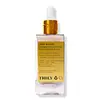What's inside
What's inside
 Key Ingredients
Key Ingredients

 Benefits
Benefits

 Concerns
Concerns

 Ingredients Side-by-side
Ingredients Side-by-side

Water
Skin ConditioningGlycerin
HumectantPropanediol
SolventPentylene Glycol
Skin ConditioningIsononyl Isononanoate
EmollientLimnanthes Alba Seed Oil
Skin ConditioningNiacinamide
SmoothingCastor Oil/Ipdi Copolymer
Carbomer
Emulsion StabilisingChlorphenesin
AntimicrobialButyrospermum Parkii Butter
Skin ConditioningCaprylic/Capric Triglyceride
MaskingAcetyl Tetrapeptide-2
Skin ConditioningTrisodium Ethylenediamine Disuccinate
Sodium Hydroxide
BufferingCaprylyl Glycol
EmollientCellulose Gum
Emulsion StabilisingEthylene/Propylene/Styrene Copolymer
Sorbitan Oleate
EmulsifyingTriethoxycaprylylsilane
Parfum
MaskingCI 77492
Cosmetic ColorantCI 77891
Cosmetic ColorantWater, Glycerin, Propanediol, Pentylene Glycol, Isononyl Isononanoate, Limnanthes Alba Seed Oil, Niacinamide, Castor Oil/Ipdi Copolymer, Carbomer, Chlorphenesin, Butyrospermum Parkii Butter, Caprylic/Capric Triglyceride, Acetyl Tetrapeptide-2, Trisodium Ethylenediamine Disuccinate, Sodium Hydroxide, Caprylyl Glycol, Cellulose Gum, Ethylene/Propylene/Styrene Copolymer, Sorbitan Oleate, Triethoxycaprylylsilane, Parfum, CI 77492, CI 77891
Aloe Barbadensis Leaf Juice
Skin ConditioningWater
Skin ConditioningJojoba Oil/Caprylic/Capric Triglyceride Esters
Skin ConditioningVanilla Planifolia Fruit Extract
Skin ConditioningPaullinia Cupana Seed Extract
Skin ConditioningPhenoxyethanol
PreservativeTetrasodium Glutamate Diacetate
Tocopherol
AntioxidantParfum
MaskingPolyglutamic Acid
Skin ConditioningCeramide NP
Skin ConditioningCeramide AP
Skin ConditioningCeramide EOP
Skin ConditioningPhytosphingosine
Skin ConditioningCholesterol
EmollientSodium Lauroyl Lactylate
EmulsifyingCarbomer
Emulsion StabilisingXanthan Gum
EmulsifyingCI 17200
Cosmetic ColorantCI 60725
Cosmetic ColorantAloe Barbadensis Leaf Juice, Water, Jojoba Oil/Caprylic/Capric Triglyceride Esters, Vanilla Planifolia Fruit Extract, Paullinia Cupana Seed Extract, Phenoxyethanol, Tetrasodium Glutamate Diacetate, Tocopherol, Parfum, Polyglutamic Acid, Ceramide NP, Ceramide AP, Ceramide EOP, Phytosphingosine, Cholesterol, Sodium Lauroyl Lactylate, Carbomer, Xanthan Gum, CI 17200, CI 60725
 Reviews
Reviews

Ingredients Explained
These ingredients are found in both products.
Ingredients higher up in an ingredient list are typically present in a larger amount.
Carbomer is a polymer of acrylic acid. Its main role is to create a gel consistency.
A high amount of carbomer can cause pilling or balling up of products. Don't worry, most products contain 1% or less of carbomer.
Parfum is a catch-all term for an ingredient or more that is used to give a scent to products.
Also called "fragrance", this ingredient can be a blend of hundreds of chemicals or plant oils. This means every product with "fragrance" or "parfum" in the ingredients list is a different mixture.
For instance, Habanolide is a proprietary trade name for a specific aroma chemical. When used as a fragrance ingredient in cosmetics, most aroma chemicals fall under the broad labeling category of “FRAGRANCE” or “PARFUM” according to EU and US regulations.
The term 'parfum' or 'fragrance' is not regulated in many countries. In many cases, it is up to the brand to define this term.
For instance, many brands choose to label themselves as "fragrance-free" because they are not using synthetic fragrances. However, their products may still contain ingredients such as essential oils that are considered a fragrance by INCI standards.
One example is Calendula flower extract. Calendula is an essential oil that still imparts a scent or 'fragrance'.
Depending on the blend, the ingredients in the mixture can cause allergies and sensitivities on the skin. Some ingredients that are known EU allergens include linalool and citronellol.
Parfum can also be used to mask or cover an unpleasant scent.
The bottom line is: not all fragrances/parfum/ingredients are created equally. If you are worried about fragrances, we recommend taking a closer look at an ingredient. And of course, we always recommend speaking with a professional.
Learn more about ParfumWater. It's the most common cosmetic ingredient of all. You'll usually see it at the top of ingredient lists, meaning that it makes up the largest part of the product.
So why is it so popular? Water most often acts as a solvent - this means that it helps dissolve other ingredients into the formulation.
You'll also recognize water as that liquid we all need to stay alive. If you see this, drink a glass of water. Stay hydrated!
Learn more about Water